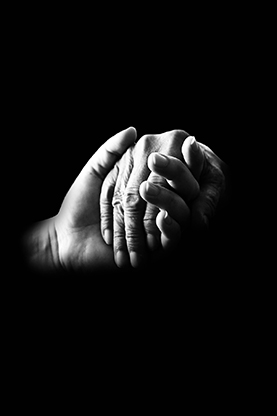 As someone who has dealt with health issues for both my parents, who are now deceased, I can attest to the import-ance of empathy in healthcare settings. However, because
As someone who has dealt with health issues for both my parents, who are now deceased, I can attest to the import-ance of empathy in healthcare settings. However, because
my personal experience with health issues is, fortunately, rather limited I cannot understand exactly what others are experiencing when they face their own mortality.
This is the premise behind the Cleveland Clinic’s focus on empathy. To get an idea of how the Cleveland Clinic makes patient empathy a priority, check out its empathy video series on YouTube. The underlying theory is that, beyond medical intervention, the human connection is what makes a difference.
Empathy is more than just a buzzword at Cleveland Clinic. Empathy is part of the employee culture, as evidenced in this video.
The Cleveland Clinic shares its focus on empathy with other professionals in its annual Patient Experience: Empathy & Innovation Summit. This year marks the summit’s seventh year. More than 2,100 people attended the 2015 Patient Experience Summit, from 45 states and 37 countries, representing hundreds of hospitals, healthcare systems and businesses from around the world.
There’s something to be said for a doctor’s “bedside manner.” Studies have revealed that physician empathy is linked to improved patient outcomes. Nurses’ empathy has been shown to affect distress levels in patients.
Paul Rosen, clinical director of service and operational excellence at Nemours, delivers a compelling TEDx Talk on The next revolution in healthcare? Empathy. “My loved one,” he said, “does not feel he’s being treated like a human being. Something is broken.”
It should be no surprise, then, that empathy is equally important in healthcare marketing. Empathy is a powerful emotion, one that helps brands connect with their audiences. Whether you’re advertising a hospital and its renowned doctors, a cutting-edge pharmaceutical drug to relieve pain or say, a home for first-time homebuyers, empathy goes a long way in conveying your message.
So how do you express empathy in healthcare promotions if you haven’t had the same experiences as patients? It’s all about storytelling. Let the patients and caregivers tell their stories. Note that patients’ stories are not necessarily the same as testimonials. Patients’ stories give a glimpse into their lives and their outcomes. In short, storytelling should be about the end consumer, not about the organization or product you’re promoting.
Empathy can have an impact across audiences. Empathy addresses a patient’s or loved one’s pain points (and we’re not only talking physical pain). For a parent, it could be how to protect a child. For a spouse, it could be advocating for one’s partner. For an individual, it could be the fear of the unknown.
Empathy in healthcare advertising not only recognizes these pain points, it validates, addresses and never dismisses them. Empathy begins with really listening to patients, understanding their concerns, discovering how to allay those concerns and then communicating this in a caring way.
Approach all communications from the patient perspective. It’s a tall prescription to fill, but it’s just what the doctor ordered.
By Darcy Grabenstein, senior copywriter at Annodyne

